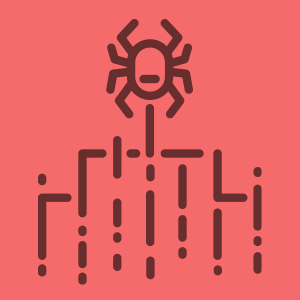How to stop ransomware attacks





 (1 votes, average: 5.00 out of 5)
(1 votes, average: 5.00 out of 5)Ransomware is now recognized as one of the nastiest cyberthreats in existence. What’s more, it’s continually growing in both volume and sophistication. With that in mind, here is a brief guide on how to stop ransomware attacks.
Invest in a reputable anti-malware product with integrated firewall
It is extremely risky to depend on the default security applications bundled with the main operating systems (desktop and mobile). The basic fact of the matter is that Microsoft, Apple, and Google are general software developers, they are not specialist cybersecurity companies. They subsequently cannot be expected to have the same level of expertise as companies that actually focus purely on cybersecurity.
The good news is that you can get a robust anti-malware product with an integrated firewall from a reputable brand free for personal use or at a very low cost for business use. For completeness, if you’re a “power-user” or a freelancer, you might be best to pay for one of the premium consumer options.
These days, it’s generally best to go for a cloud-based anti-malware product. There are several reasons for this, but most of them revolve around the fact that the vendor takes responsibility for updating them.
Make sure you keep your operating system(s) and local apps updated
To be clear, the reason most of the headline-making ransomware attacks tend to involve Windows PC is that the headline-making ransomware attacks tend to involve businesses or government entities, both of which tend to use Windows. MacOS, iOS, Android, and Linux are all vulnerable to it too.
Microsoft, Apple, and Google all regularly update their active operating systems and will generally notify users when these updates are ready. The key word in that sentence, however, is active
Expired operating systems are basically sitting targets for ransomware attacks. If you must keep them running then keep them offline if at all possible. If you must put them online then do your absolute best to minimize both the amount of data you keep on them and the length of time for which it is kept on the device.
Also, be careful about staying logged into any websites which hold sensitive data and about attaching storage devices that contain sensitive data. Disconnect from the internet when you’re not actually using it, especially if you’re not going to be using it for long periods, for example, overnight.
Linux is a bit more complicated due to its open-source nature. Ideally, stick with distros that have active communities and make sure to keep yourself informed of what is happening in them. You may need to be prepared to arrange for updates yourself.
Last but definitely not least, remember that any locally-installed apps will also need to be kept updated. If you’re using cloud-based apps, their updates will be managed by the vendor.
Be alert to social-engineering tricks
By this point, it’s probably fair to say that most internet/email users grasp the principle of thinking before they click. It’s also probably fair to say that most internet/email users do generally apply it when they are thinking calmly and clearly and not under any pressure. The problem tends to come when they are put under pressure to make a decision quickly. This, therefore, tends to be where social engineering comes in.
The reason why social engineering is such a huge part of cybercrime is precisely that automated defences are now so efficient. Most of the time, the purpose of social engineering is to persuade a victim that they need to ignore their automated defenses and use human judgment.
The reason it works is that there are times when automated defenses get it wrong (e.g. false positives) and humans do overrule them. The reason it’s dangerous is that these decisions have to be taken for the right reasons. For this reason, you should be very suspicious of anyone or anything who/which aims to put you under pressure in any way or for any reason.
Have a rigorous data backup process in place
Data backups can’t stop ransomware attacks, but they can make them a whole lot less painful to handle.
Please click here now to start your free 30-day trial of Xcitium AEP.